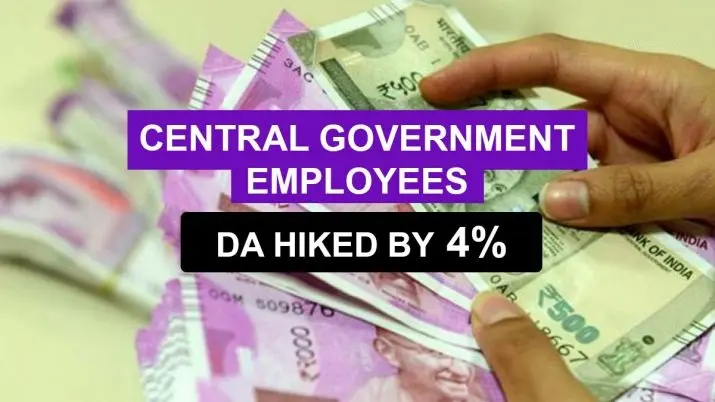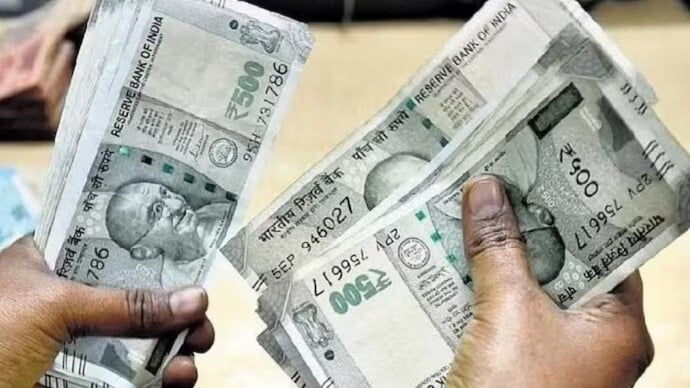Inflation Buster: Central Government Employees to Receive 4% Hike in Dearness Allowance

Inflation Buster: Central Government Employees to Receive 4% Hike in Dearness Allowance
In a significant move to address the ongoing economic challenges and rising inflation, the Union Cabinet of India has given the green light to a 4% increase in Dearness Allowance (DA) for central government employees and a corresponding Dearness Relief (DR) raise for pensioners. This decision, hailed as an ‘Inflation Buster,’ comes at a time when the cost of living continues to surge, impacting the financial well-being of citizens across the nation.
The current Dearness Allowance for central government employees stands at 42%, which, although substantial, needs periodic adjustments to combat the relentless rise in prices of essential goods and services. In this comprehensive article, we delve into the significance of this announcement, its implications for government employees and pensioners, and the broader economic context in which it is situated.
Dearness Allowance: A Lifeline Against Inflation
Dearness Allowance, often referred to simply as DA, is a crucial component of a central government employee’s salary structure. It is designed to mitigate the adverse effects of inflation on their purchasing power. DA is a variable allowance that fluctuates with changes in the Consumer Price Index (CPI). The purpose of this periodic adjustment is to ensure that government employees can maintain their standard of living despite the ever-increasing prices of goods and services.
In a country as vast and diverse as India, where living costs can differ significantly from one region to another, DA is an essential element of an employee’s compensation. The adjustment takes into account the fluctuations in the prices of essential commodities, including food, fuel, and housing, which directly affect the livelihood of millions of central government employees and pensioners.
The 4% Boost: A Ray of Hope
The recent decision to increase Dearness Allowance by 4% marks a significant step in the government’s commitment to providing financial relief to its employees. With this raise, the DA component in a central government employee’s salary will grow from 42% to 46%. For the pensioners, this also means an increase in Dearness Relief, helping retired individuals cope with the financial challenges brought about by inflation.
This 4% boost may seem modest at first glance, but it carries substantial implications for the recipients. The raise in DA directly translates into a higher salary for government employees and an increase in the pension for retired personnel. In practical terms, this means that these individuals will have more resources at their disposal to meet their daily expenses, especially in a time when the cost of living has been steadily climbing.

Economic Context: Inflation in India
Understanding the importance of this 4% hike in DA requires an examination of the prevailing economic conditions in India, particularly with regard to inflation. Inflation, which refers to the sustained increase in the general price level of goods and services over time, can have far-reaching consequences for households and the broader economy.
In India, as in many countries, inflation is influenced by a multitude of factors. Key drivers include:
1. Global Commodity Prices: India’s economy is interconnected with the global market. Therefore, fluctuations in international commodity prices, such as crude oil and food, can significantly impact domestic inflation.
2. Monetary Policy: The Reserve Bank of India (RBI) plays a pivotal role in controlling inflation through its monetary policy. Adjustments in interest rates and money supply can influence inflation rates.
3. Fiscal Policy: The government’s fiscal policies, including taxation and public expenditure, can also affect inflation. For instance, government spending on infrastructure projects can stimulate economic growth but may also contribute to inflation.
4. Supply and Demand Dynamics: Shortages of key goods and services, coupled with rising demand, can result in price increases. This is particularly pertinent in agriculture, where crop failures and supply chain disruptions can lead to food inflation.
5. Exchange Rates: Fluctuations in exchange rates can influence the prices of imported goods, impacting inflation levels.
Against this backdrop, it becomes evident that inflation is a complex and multifaceted challenge that governments must navigate. The impact of inflation is not uniform; it can affect various sections of society differently, with a particularly severe impact on those with fixed incomes, such as government employees and pensioners.
The Real-World Impact: Relief for Central Government Employees
The 4% increase in Dearness Allowance is more than a mere statistic; it signifies real-world relief for central government employees. Let’s explore how this adjustment can positively influence their lives:
1. Enhanced Purchasing Power: With higher DA, employees will have more financial resources at their disposal. This can lead to increased spending on essential goods and services, thereby boosting demand and stimulating economic activity.
2. Maintaining Quality of Life: As the cost of living rises, it becomes increasingly challenging for individuals to maintain their current standard of living. The DA hike helps employees ensure that their quality of life remains stable.
3. Relief for Pensioners: The raise in Dearness Relief for pensioners is particularly crucial. Many pensioners are elderly and may not have additional sources of income. The hike in DR helps them cope with rising expenses and enjoy a more comfortable retirement.
4. Economic Growth: When government employees experience an increase in disposable income, it can positively impact economic growth. Increased consumer spending can spur businesses, create jobs, and foster a healthier economic environment.
5. Employee Morale: A hike in DA also has intangible benefits, such as boosting employee morale and motivation. Recognizing the government’s efforts to address their financial concerns can enhance job satisfaction and overall productivity.

The Way Forward: Managing Inflation
While the 4% hike in Dearness Allowance is undoubtedly a welcome move, it’s essential to acknowledge that inflation is an ongoing challenge. To maintain the financial well-being of government employees and pensioners, policymakers must continue to monitor inflation rates and make necessary adjustments to DA and DR.
Additionally, it is crucial for the government to address the root causes of inflation by implementing sound economic policies. This includes measures to stabilize global commodity prices, prudent fiscal management, and strategies to bolster domestic production and supply chains.
Moreover, the Reserve Bank of India’s monetary policy should remain vigilant in controlling inflation without hindering economic growth. Effective communication and cooperation between fiscal and monetary authorities are paramount in this endeavor.

Conclusion: Navigating Economic Challenges
The recent decision to increase Dearness Allowance for central government employees and Dearness Relief for pensioners by 4% is a beacon of hope in the face of mounting inflationary pressures. This adjustment provides much-needed relief to those who are most vulnerable to the impact of rising prices.
As India continues to grapple with complex economic dynamics, it is imperative that the government remains committed to addressing the concerns of its employees and pensioners. A strong and resilient economy can only be built when the financial well-being of its citizens is safeguarded.
The ‘Inflation Buster’ – the 4% DA hike – represents a step in the right direction. It is not just a statistic; it is a lifeline for those who have dedicated their careers to public service and a testament to the government’s commitment to their well-being. In these challenging times, such measures provide reassurance that the government is responsive to the needs of its people and committed to fostering a stronger, more prosperous nation.




